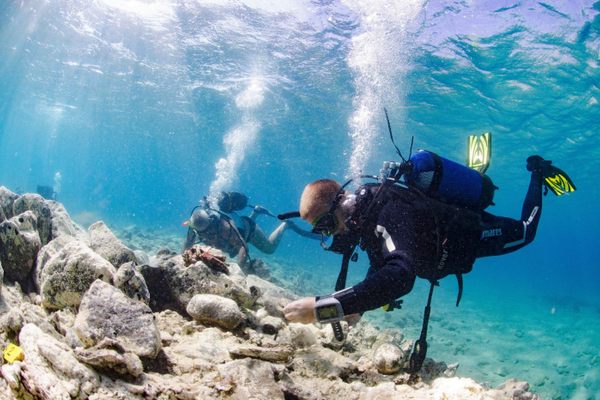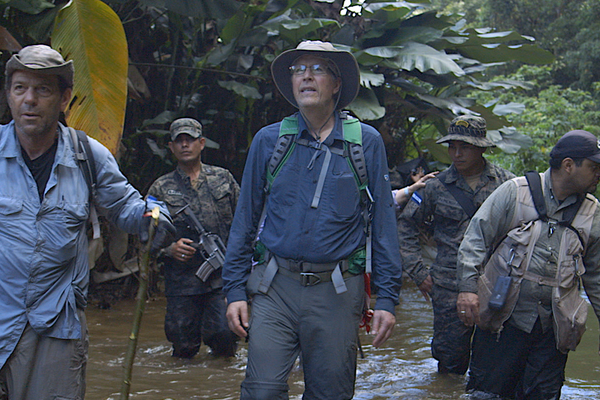Found: The Secrets of Lost, Underwater Egyptian Cities
You can soon view surviving artifacts.
There is a whole underwater world of forgotten ancient cities hidden in the Mediterranean Sea. Archeologists recently dove as deep as 32 feet to swim through temples and statues of two sunken Egyptian cities, Thonis-Heracleion and Canopus. The seafaring towns’ eternal resting place is at the mouth of the Nile, their existence and treasures lost for thousands of years, CNN reports. Now, the artifacts from the underwater excavation will be on display at the British Museum on May 19 in an exhibit called Sunken Cities: Egypt’s Lost Worlds.
Archeologists have been exploring the underwater site for over 20 years. French archeologist Franck Goddio and his team first discovered Thonis-Heracleion in 2001 while neighboring city Canopus was discovered back in 1933 when a British RAF pilot noticed some ruins that led into the sea. British Museum exhibit curator, Aurelia Masson-Berghoff explained to CNN that the cities became submerged from years of natural phenomena, including rising sea level, earthquakes, and subsidence—the gradual sinking of land.
The archeologists collected an assortment of ancient objects from hieroglyphic slates and steles, statues of leaders and gods, and ornate jewelry. The largest exhibit piece the divers brought ashore was a 16-feet-tall and 12,000-pound granite sculpture of Hapy, who (funny enough) is the god of flooding.
These historical treasures reveal more about religion, culture, and political life in ancient Egypt. In 700 BC, both cities were bustling trade hubs. Thonis-Heracleion was one of Egypt’s most important commercial centers for the Mediterranean world and Canopus was a well-known city for worshipping the gods.
Goddio’s team only excavated less than five percent of Thonis-Heracleion and Canopus, having to leave behind huge artifacts like a sacred barge of boats for the celebration of Osiris, the god of the underworld.
That means there’s still a trove of knowledge and history that has yet to be discovered.










Follow us on Twitter to get the latest on the world's hidden wonders.
Like us on Facebook to get the latest on the world's hidden wonders.
Follow us on Twitter Like us on Facebook